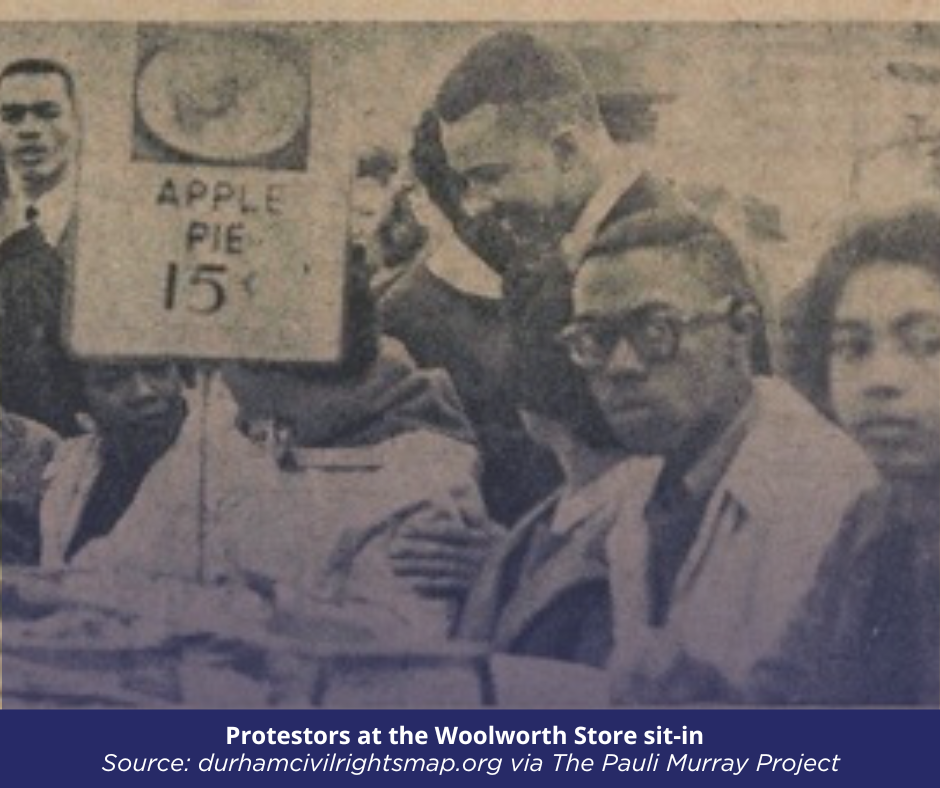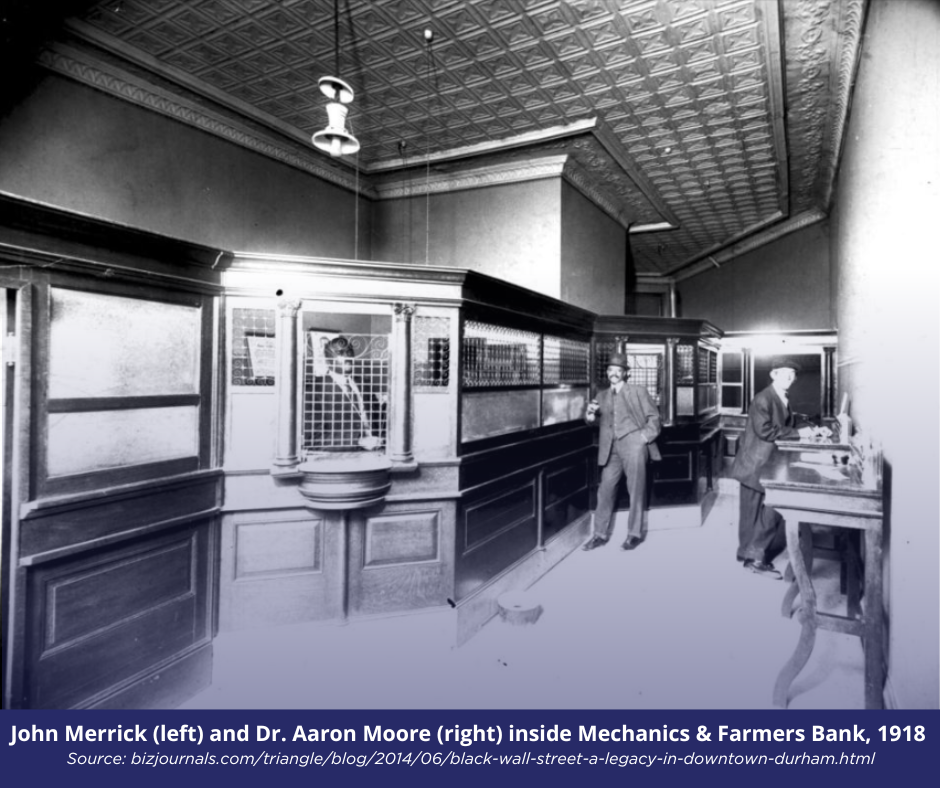Durham, North Carolina was a host to many important events and developments in the civil rights movement in the United States. While Durham's landscape has changed a lot over the recent decades, there are still many monuments and remaining structures of the past that tell important stories of Durham's residents. Throughout this article, GoDurham's social media channels and rack cards (available at Durham Station), we want to highlight some notable locations that fit this year's Black History Month theme of "Resistance."
To learn more about Black Hisory along GoDurham's routes, you can listen to our 2019 recordings in collaboration with NCCU's History department HERE or by visiting our GoDurham souncloud HERE

The Royal Ice Cream Parlor and Woolworth Store Sit-ins (Route 9 and Route 2)
SIT-INS were important acts of resistance to the segregation laws of pre-civil rights America. The Royal Ice Cream Parlor, located where the now Union Missionary Baptist church sits on 1000 North Roxboro Street (along Route 9), was the subject for the first sit-in in Durham, NC.
On June 23rd, 1957, Rev. Douglas E. Moore lead a group of six students to protest segregation by sitting in the whites-only section of the parlor. The group was arrested after and with the help of Durham lawyer Floyd McKissick the case was appealed up to the Supreme Court. The protest, seen as radical at the time, was the likely inspiration for future protests in Durham.
The Woolworth Store, located on 122 W. Main Street and W. Parrish St (along Route 2) became the next epicenter of civil rights protests in Durham. On February 8th, 1960, seventeen black North Carolina Central University students (then North Carolina College) staged a sit-in at Woolworth’s Store. They were refused service and as a result the students remained seated. The protest ended when the store received a fake bomb threat and closed for the remainder of the day. This protest sparked Martin Luther King Jr. to visit the store on Feb. 16th and afterwards gave his “A Creative Protest” speech at White Rock Baptist Church (along Route 5).
North Carolina Central University (Route 5)
EDUCATION pla

NCCU and its students played in important role during the civil rights movement in Durham. It was in 1960 when seventeen CCU students staged a sit in the Woolworth store (along Route 2), a white only lunch counter that was later visited by Martin Luther King Jr. following the protest. Martin Luther King Jr. visited NCCU in 1964 and spoke to a crowd of 5,000.
NCCU was also a key part in the Hocutt v. Wilson case, which was an attempt desegregate higher education in the United States. A student named Thomas Raymond Hocutt filed suit after he was denied admission to UNC Chapel Hill’s Pharmacy School in 1933 solely on the basis of his race. Two black lawyers from Durham, Conrad O. Pearson and Cecil McCoy, with the support of the National Association for the Advancement of Colored People (NAACP), initiated the attempt. The case was ultimately dismissed for lack of standing but served as a test case to challenging the “separate but equal” doctrine in education and an important precursor to the Brown v. Board of Education case.
North Carolina Mutual Life and Mechanics & Farmers Bank (Route 2)


FINANCIAL INSTITUIONS catering to the black population in Durham were crucial in creating the now historic Black Wall Street along Parrish Rd. In pre-civil rights America, there were very few financial institutions that supported black owned businesses and families. Fighting for opportunity, Durham community leaders united and created avenues for financial support for the black population of Durham.
On October 20th, 1898, John Merrick, a Durham black businessman and community leader, along with six other black community leaders, founded the North Carolina Mutual and Provident Association, later named North Carolina Mutual Life. NC Mutual Life was founded on a mutual assessment plan to provide insurance opportunities to all black individuals. The original mission statement aimed to “relieve distress amongst poverty-stricken segment of Durham’s Negro population.” NC Mutual Life spawned allied businesses, including a hosiery mill, a real-estate company, a drug store, various publications and Mechanics and Farmer’s Bank.
Established in 1908, the Mechanics and Farmers Bank, located on 116 W. Parrish St (along Route 2) became the oldest black-owned bank in North Carolina and an important source of financing in the 1920s, saving over 500 African American farms and residences. The bank's policy stated its goal to provide "no large loans…to a few profiteers, but rather conservative sums to needy farmers and laborers." In 1935, Mechanics and Farmers bank held the distinction of being the first lending institution in North Carolina to receive a Certificate of Authority from the Federal Housing Authority.
Sources:
Royal Ice Cream Parlor and Woolwoth Sit-ins
North Carolina Central University
- Durham’s 150th Anniversary Recording “Route 5: NCCU” in collaboration with NCCU’s History Department.
- durhamcountylibrary.org/exhibits/dcrhp/events/martin_luther_king_jr.'s_visits_to_durham_1956_196/
- loc.gov/exhibits/brown/brown-segregation.html#obj22A
- durhamcountylibrary.org/exhibits/dcrhp/
North Carolina Mutual Life and Mechanics and Farmers Bank
